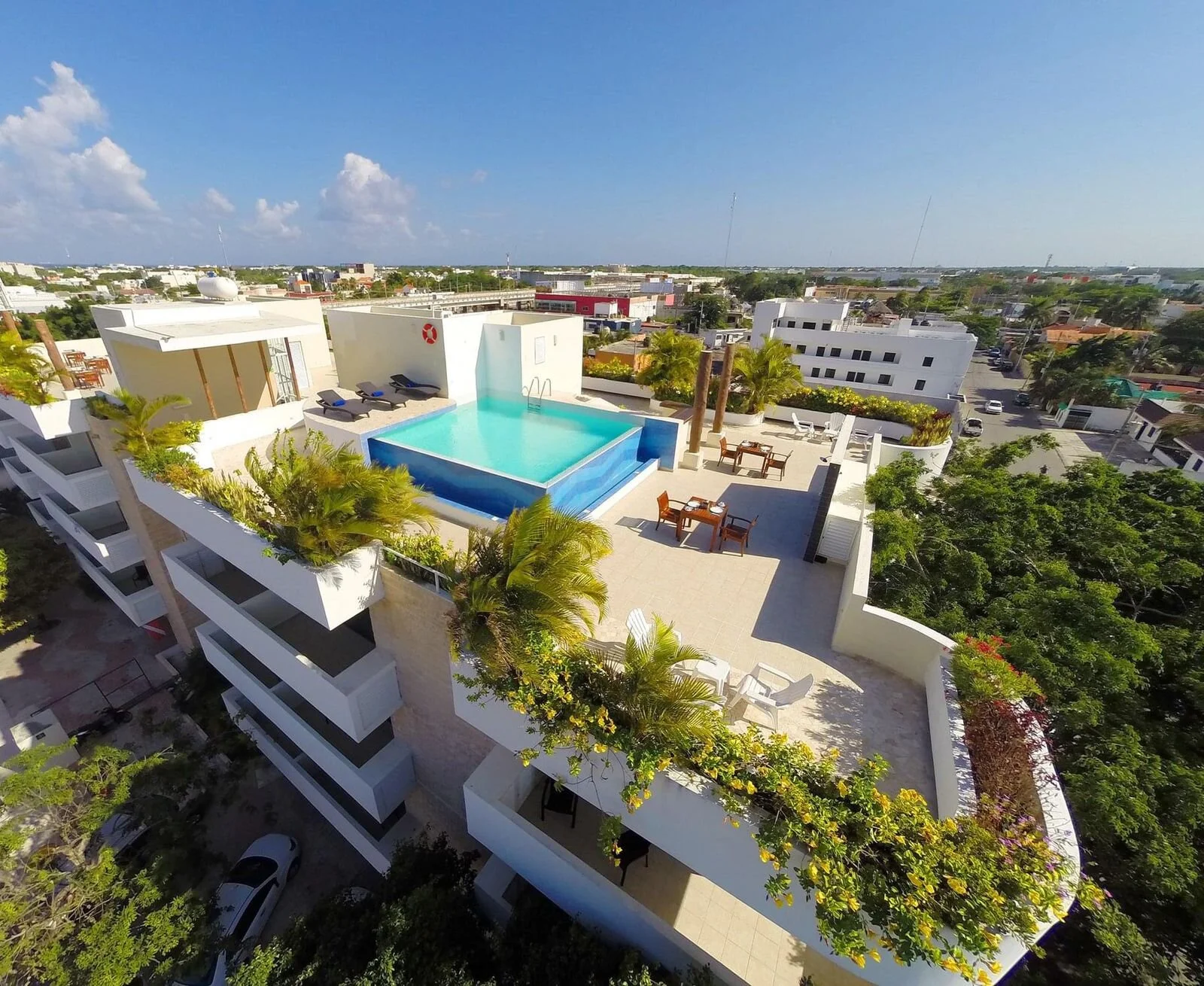
ACCOMMODATION
HOTEL ANGELOS
The hotel is located right beside our shop, half a block away from the highway and 15 minutes walk from the 5th Avenue. Angelos Hotel counts with a broad variety of private rooms from 2 people to a large group of 8 persons. It counts with a dinning area, two swimmings pools one on the first floor and one on the roof top, and free parking space.
Playa del Carmen
We have the luck to be based on one of most beautiful places in the world.
The Riviera Maya has countless options for everyone to create their perfect vacation. We are surrounded of history in and out of the water! The beauty of the turquoise water and crystal clear Cenotes make your vacation be magical!
Originally the Riviera Maya region was an important trade and religious hub for the ancient Mayas between 1000-1550 AD. You can still see the remnants of this prosperous era at the ruins of Tulum and the towns of Playa del Carmen, Coba,
Puerto Morelos, Akumal,and Chemuyil This prosperity waned after many wars and invasions before the Spaniards’ arrival. After their arrival, the colonial government didn’t see any economic need to develop the area. Lucky for us, the inadequate roads discouraged development of the area.
Riviera Maya slowly developed into a vacation destination with the popularity of Cozumel. Initially, people only came here to catch the ferry to the beautiful island, but they were quick to discover the natural beauty of the gateway to Cozumel.
Today, this splendid coastline of the far eastern Yucatan peninsula is a living museum to Mexico’s cultural and natural heritage. Hundreds of kilometers of sugary shoreline boarder the quaint villages and vibrant reefs that make the Riviera Maya region a laid-back vacation destination. Divers are drawn to The Great Maya Reef which is the world’s second largest reef system and a great variety of animals while others discover its underground river system complete with caves and cenotes.
Tulum
Amancay Freediving is one of the oldest Freediving Centers located in the Riviera Maya and is happy to offer freediving trips and training to customers who are staying in Tulum.
Tulum is a very well known archaeologsical site in Mexico and also features some of the most pristine Cenotes in the country! Some of the better known Cenotes which are located in the Tulum area include Laguna Kaan Luum, Cenote Angelita, Carwash, and Casa Cenote.
Amancay is happy to take you to any of these freediving Cenotes in Tulum for either fun dives or for training.
Tulum is the site of an ancient, pre-Columbian Mayan walled city which served as a major port for Coba. The area is best known for it’s ruins and crystal clear water beaches. From a small highway town to be on the New York Times front page, Tulum is one of the most popular destination for all young people looking for peace and quiet, retreats , parties and new adventures. Tulum was one of the last cities which was inhabited by the Maya .And overall a scenery for content creators.
CENOTES
The Cenotes have become one of the biggest attraction for divers, due to them being unique in the world
Cenotes were the only source of water in the jungle for the Mayan civilization and to this day are considered sacred by the Mayan people. The Mayans believe cenotes to be an entrance to their “underworld” where their gods live and their spirits reside after death. The Mayans first called these sinkholes “Dznot” or sacred well. The word had been changed into “cenote” by the Spanish conquerors.
The Yucatan Peninsula use to be underwater. It looked very similar to what we see when we are diving off of the coast here today – lots of coral reef, coral caves, coral swim and marine life.
During the ice age, the level of the ocean dropped, exposing the reef to the climate and time. The coral dried and the jungle started growing over the thick limestone platform created by the coral reef. Fossils found inland are the best proof of this and are commonly seen during a cavern dive
In time, the rain mixed with the carbon dioxide in the atmosphere, forming a weak solution called carbonic acid. The carbonic acid began to work its way through the porous limestone, carving holes in the soft limestone and creating a long network of passageways and tunnels.
The dissolved limestone started filtering and dripping into dry passages over thousands of years, forming amazing cave decorations of stalactites, stalagmites and columns.
After the last ice age, the melting ice raised the ocean back to today’s current level, submerging the cave systems in water. Caves with ceilings higher than sea level were partially flooded, leaving some remaining air space.
Some of the partially air filled cave ceilings became too thin to hold their own weight, collapsing and creating sink holes or natural windows as entrances to the underground river system.





